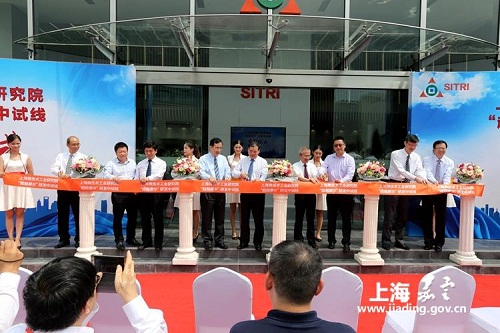The Shanghai Industrial μTechnology Research Institute (SITRI) started trial operations at its new Eight-inch "More than Moore" R&D center in Shanghai's Jiading district on Sept 10.
The announcement was made at the Sensor China Expo and Conference 2017, which was held in Shanghai last week.
The center will be used for R&D into "More than Moore" technology, a field of semiconductor manufacturing that focuses on integrating technologies such as sensors, biochips and actuators into chips, rather than simply aiming to increase the processing power of chips in line with Moore's Law.
SITRI's new facility is the first in China to have an eight-inch pilot line for "More than Moore" R&D, a substantial upgrade on existing six-inch pilot lines. It is also compatible with complementary metal oxide semiconductors.
The pilot line will be used particularly for R&D into sensor products technology, and it is equipped with processing and measuring facilities such as micro-electromechanical systems (MEMS), silicon photonics, radio frequency and magnetic sensors.
The center will contain facilities for R&D, small-lot production, technical training and equipment checking. Its monthly output is expected to reach 3,000, according to an industry insider.
The pilot line was built to help universities and research institutes accelerate the transfer of newly developed technologies to industrial production, according to You Jiajie, vice president of SITRI Group.
Based on the technical strength of the pilot line, SITRI also plans to invest in and incubate start-ups in the fields of "More than Moore" and internet of things technology.
The institute has worked with China Integrated Circuit Industry Investment Fund Co and several other investors to launch a 5 billion yuan ($764 million) "More than Moore" industry fund to support innovative companies in the early stages of development.
SITRI is a new kind of international innovation center, focusing on globally accelerating the innovation and commercialization of "More than Moore" technologies to power the internet of things.


